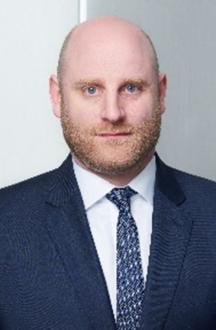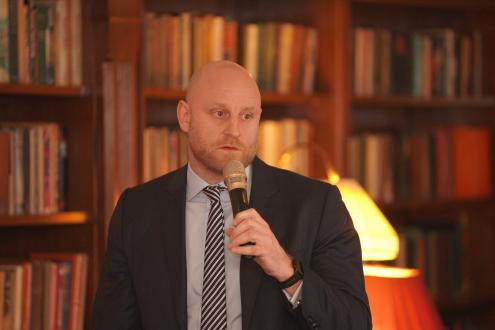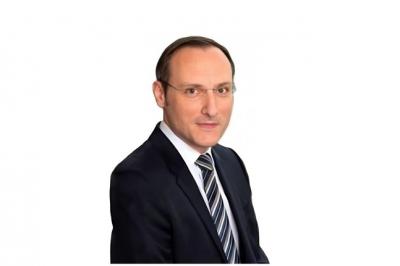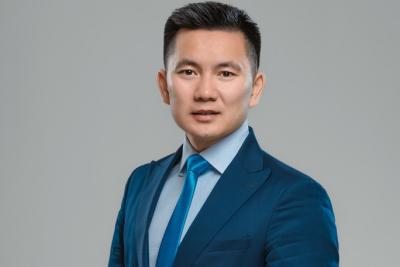M&G Investments’ Michael Dyer on Finding Value & Performance with a Global Macro Investing Strategy

Michael Dyer of M&G Investments
May 15, 2023
On March 23 at the China Club in Hong Kong, Hubbis hosted a lunchtime discussion on the current global market conditions, on how the M&G Investments’ Episode Macro strategy has been able to profit from 2022’s turmoil in equity and bond markets, and where their investment team can identify value and opportunity in 2023.
A Hubbis Thought Leadership Discussion with Exclusive Partner: M&G Investments
The Hubbis event was exclusively hosted with M&G Investments, and the guests were all private bank, insurance and wealth management gatekeepers, CIOs and other decision-makers working in wealth management circles in Hong Kong or elsewhere in the region.
Loretta Ng, M&G Investments’ Singapore-based Head of Asia Pacific, briefly introduced M&G, noting that the firm was founded more than 120 years ago in London and had approaching USD366 billion in AUM [as of 31 December 2022], spread across public markets, and also private markets, including real estate, infrastructure, private credit. She also explained that M&G is increasing activity in APAC markets such as Australia, Singapore, Hong Kong, Japan, Korea and had recently opened in Taiwan.
The main speaker for the event was Michael Dyer, M&G’s Hong Kong-based Investment Director in the Multi-Asset team. Dyer joined M&G in 2019, prior to which he worked at Neuberger Berman, also in Hong Kong, as a Client Portfolio Manager for multi-asset, liquid alternative and equity investments and before that with Morgan Stanley Investment Management in London, in multi-alternative and hedge fund portfolio solutions.
Overall, he has over 21 years of experience working in the investment management industry. He graduated from University of Leeds and holds the Chartered Financial Analyst (CFA) and Chartered Alternative Investment Analyst (CAIA) designations.
This is a brief summary of Dyer’s many valuable insights and observations and is designed to provide a snapshot of his and M&G’s views for the USD4.7 billion Episode Macro strategy [as of 28 February 2023] M&G runs, how the M&G Episode Macro strategy had been able to profit from 2022’s turmoil in equity and bond markets, and how they plan to continue this positive performance through 2023 and beyond.
Selected Insights & Observations from Michael Dyer:
M&G’s Episode Macro strategy as a diversifier and differentiator for private client portfolios in a world of heighted geopolitical tensions and greater market uncertainties
Dyer observed how geopolitical tension is a huge issue, with typical High Net Worth clients especially worried – and as a result very cautious - about where they put their money in this volatile and uncertain world.
Dyer explained that his mission at the event was to focus on their investment approach for their Episode Macro strategy, which he described as a directional multi-asset strategy, focusing on liquid discretionary investment across equities, fixed income, credit, emerging markets, FX, but not commodities.
They take very directional positions in any of those markets, and typically through futures, he told guests. The ability to be flexible, to pivot the portfolio and to be dynamic and opportunistic during periods of volatility can be very valuable for investors.
Taking calculated bets amidst uncertainty, and staying flexible
Dyer explained they are seeking to generate absolute returns, primarily investing in the liquid alternatives bucket.
He said they consider there is very seldom any real clarity in markets, which continually lurch from one set of stories to another set of narratives. They believe that the ability to forecast what might happen tomorrow is exceedingly difficult, if not impossible. Accordingly, they aim to respond to where they consider the best odds are in the market at any one time. The core of the approach is the ability to be flexible, he said.
Dyer said they think about the world in a bit of a different way. “We use a framework of valuation and behavioural finance to try and understand where we think the best risk adjusted returns might be, which means we look for periods where markets or a particular market is being too fearful or too greedy about what is expected,” he elucidated. “What that means we tend to not try to make grandiose predictions about what is going to happen in the next 12 months, or the next 5 years.”
Uncertainty requires agility
He explained that the M&G Episode Macro strategy dated back to the early 2000s.
“We acknowledge uncertainty, and we are agile – we can literally go anywhere, invest in anything that we think is liquid, from equities, to bonds, from FX to credit,” he reported. “And last year, we took profit from being short US five-year bonds through to about October, and then moving to the super-long debt from October through to more recently. We have also been quite tactical in our equity exposure.”
In his opinion that the macro approach allows for the type of agility that is not there in investors’ strategic allocations, which are not particularly responsive to what happens in the markets, nor should it be, he added. For a decade plus through 2021 it was the age of the ETFs, and it was a one-way market, he indicated, but now we clearly all need to work harder to generate returns.
On the lookout…
In his view that one of the key things they look at is for behavioural biases in the market, especially when the market is or is not reacting to data as it should. He said in January they were wary while many investors wanted to hear only good news. “Right now, we are significantly in cash, in other words very underinvested, as we watch the world become more volatile and look for more opportunities to pick up,” he reported.”
Responding to a question from a guest, Dyer also briefly addressed the bank sector following the SVB and Credit Suisse crisis. Noting that clearly the sector is under stress right not but when compared with the GFC, banks entered the crisis with lower leverage and stronger balance sheets. Further, while the GFC could be characterised by a credit problem exacerbated by the opacity of securitisation or risks, thus far the concerns have stemmed from loss in confidence surrounding depositor bases exacerbated by social media and the speed and ease of online banking.
China a case in point - waiting for the froth to wear off
Dyer turned his attention to another question, this time about China. “Without laboriously going on about how we approach things, China had been cheap for a long time,” he commented. “We had seen the events of 2021 and precipitous falls, and our eyes had lit up, but we are macro investors, and we concluded that it was all too policy driven, so we had stayed away from it.”
Then the October 2022 Congress came, and the market rallied. But they saw that as a behavioural shift, as nothing had truly changed. “While we spotted an opportunity to buy on a tactical basis, we had then trimmed by half in January, as other investors were piling in. In short, our investment approach is trying to pick off that behavioural overshoot and tactically size it back when we see that [the slack] has been taken up.”
Huge freedom to pick, and to time entries and exits
When pushed on certain prevailing convictions, Dyer reported that right now, they see modest opportunities in high yielding currencies, liking for example some of the Eastern European currencies like the Hungarian Forint, the Polish Zloty, the South African Rand against things like the Swiss Franc and Japanese Yen.
They still hold some 30-year US Treasuries re reported. “It is an asymmetrical trade - if you get a softer than expected landing, then they probably won’t do anything, but if there is a harder landing, then you’ll get a reaction function.”
And in equities, he said they prefer more value-oriented markets, such as Japan, and Europe, while they are short the S&P 500.
“We see a bit more of a valuation concern in US equities,” he explained. “While other markets have cheapened to well below their 10-year averages, the S&P 500 is at its 10-year average, NASDAQ is slightly above its 10-year average, and there is every reason to think that the probability of earnings declines in the US will come through as you get this recession biting.
The March moves in markets have been accompanied by a shift in the broad narrative from a ‘no-landing’ for the US economy to a ‘harder landing’ as its expected credit conditions tighten. Bond markets have rallied significantly, as they have moved to price in an increased probability that the rate hiking cycle has peaked and tougher economic conditions could prompt cuts later in the year. However, the broader equity market appears to have remain somewhat sanguine about the potential impact that slowing growth could have on profits later in the year.
Riding uncertainty with the experts
Dyer then responded to a question as to where their strategy should sit within a robust private client portfolio.
“We seek to be a diversifier within a broader portfolio, meaning that the label would perhaps be within the liquid alternatives bucket,” he explained. “We are a global macro hedge fund strategy, we go long, we go short all the liquid markets, and we seek to generate absolute return to deliver a cash plus 4% to 8% return target.”
He added they are taking directional risk, so there will be some volatility, and they are not super hedged. “We are tactical and fit perhaps 5% to 10% of allocations. If the rest of the portfolio is slow moving, then you hope to get some diversification. For example, if you take a 60/40 portfolio and take 5% out of equities and fixed income, you can improve your drawdown character. We were up nearly 20% in 2022 while most major markets were down 20%. There may be years when 60/40 outperforms us, but we provide diversification.”
He noted that this links back to the origins of the strategy, which was developed in the late 1990s as part of the internal fund allocations. “Naturally, that portfolio was very long term, and still today, for an institutional or private client portfolio, we are designed to be that tactical pool of capital.”
He also clarified their thinking around the perennial 60/40 issue as to whether 60/40 still has relevance. “Although that thinking is not dead, it maybe the end of that 40-year bull market for bonds, and there is a new era of inflation, something that in my 22 years in the industry I had not seen,” he reported. “Central bankers, market practitioners, traders, investors, analysts, everyone is going to have a little bit more hawkish bias now.”
The final word – everyone needs to adjust to new realities and ongoing uncertainties, and being agile and tactical is a good place to be
Dyer closed his observations by noting that everyone is trying to adjust to what seems like a heightened and potentially sustained level of uncertainty. “We are a plug and play portfolio solution to provide tactical allocation for clients, and as we look forward, having the ability to react in a responsive way and use our behavioural framework may result in generating returns for clients. Uncertainty is here, so we offer a way to capitalise on it.”
The value of the investment’s assets will go down as well as up. This will cause the value of your investment to fall as well as rise and you may get back less than you originally invested. Past performance is not a guide to future performance. The views expressed in this document should not be taken as a recommendation, advice or forecast.
For Institutional Investors in Singapore and Professional Investors in Hong Kong only. Not for onward distribution. No other persons should rely on any information contained within. In Hong Kong, this financial promotion is issued by M&G Investments (Hong Kong) Limited. Office: Unit 1002, LHT Tower, 31 Queen’s Road Central, Hong Kong, and in Singapore, by M&G Investments (Singapore) Pte. Ltd. (Co. Reg. No. 201131425R), regulated by the Monetary Authority of Singapore. All forms of investments carry risks. Such investments may not be suitable for everyone. The information contained herein is provided for information purposes only and does not constitute an offer of, or solicitation for, a purchase or sale of any investment product or class of investment products, and should not be relied upon as financial advice. For Hong Kong only: If you have any questions about this financial promotion please contact M&G Investments (Hong Kong) Limited. For Australia only: M&G Investment Management Limited (MAGIM) and M&G Alternatives Investment Management Limited (MAGAIM) have received notification from the Australian Securities & Investments Commission that they can rely on the ASIC Class Order [CO 03/1099] exemption and are therefore permitted to market their investment strategies (including the offering and provision of discretionary investment management services) to wholesale clients in Australia without the requirement to hold an Australian financial services licence under the Corporations Act 2001 (Cth). MAGIM and MAGAIM are authorised and regulated by the Financial Conduct Authority under laws of the United Kingdom, which differ from Australian laws. For the Republic of Korea only: For Qualified Professional Investors only. Neither the Fund nor the author(s) is making any representation with respect to the eligibility of any recipients of this email to acquire the interests therein under the laws of Korea, including but without limitation the Foreign Exchange Transaction Act and Regulations thereunder. The interests have not been registered under the Financial Investment Services and Capital Markets Act for public offering and none of the interests may be offered, sold or delivered, or offered or sold to any person for re-offering or resale, directly or indirectly, in Korea or to any resident of Korea except pursuant to applicable laws and regulations of Korea.

Investment Director at M&G Investments

More from Michael Dyer, M&G Investments
Latest Articles






